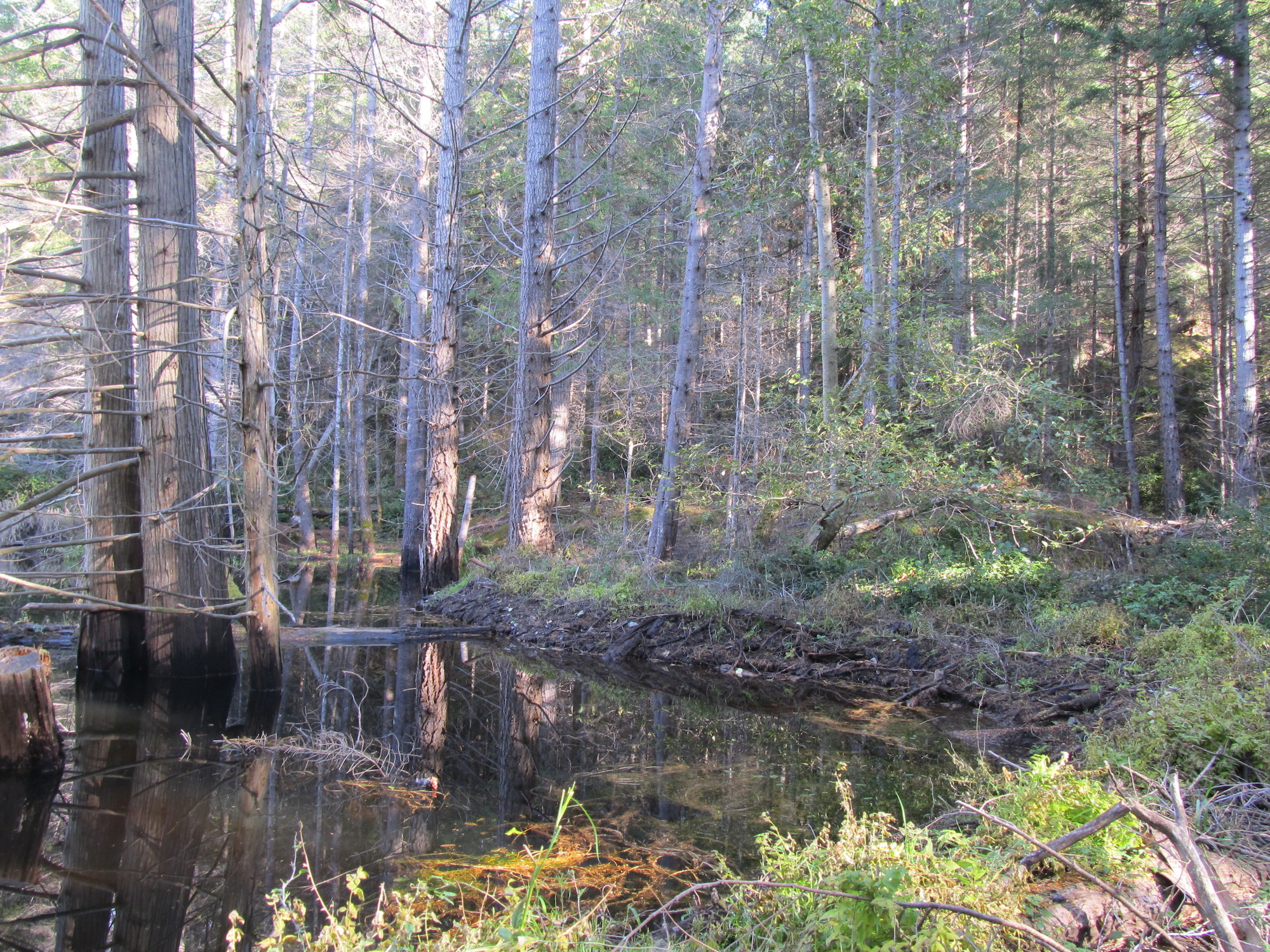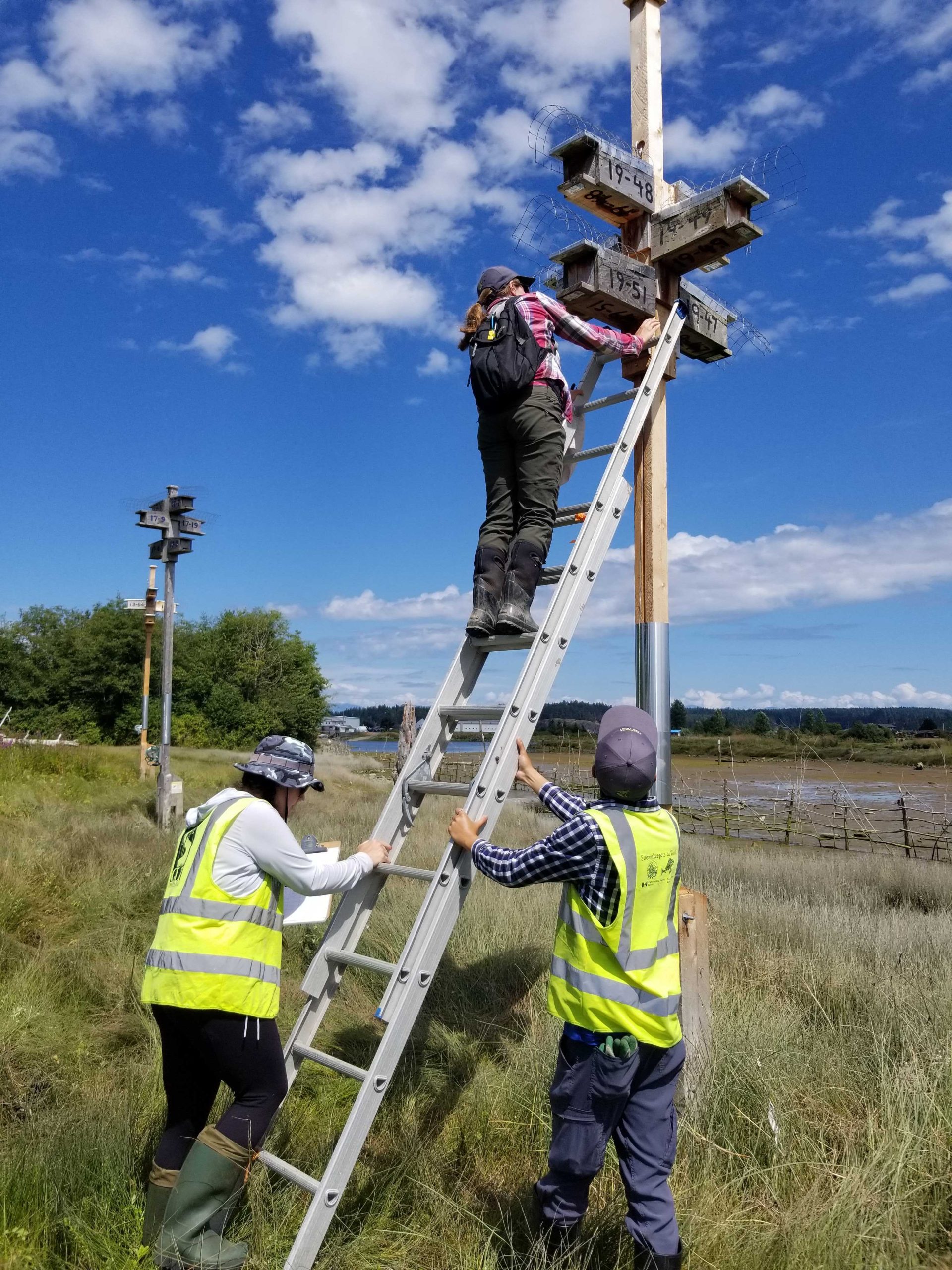LAND TRUST STARTER GUIDE
Understanding Land Trusts
The first land trust in Canada was established in Hamilton, Ontario, in 1919 as the Hamilton Naturalist Club. Since then, land trusts have slowly begun popping up around Canada. In the 1990s, they started coming together to form alliances. There are four alliances currently established to amplify the strength and resources of their member land trusts: the Land Trust Alliance of British Columbia, the Ontario Land Trust Alliance, the Réseau de milieux naturels protégés in Québec, and the Alliance of Canadian Land Trusts.
What is a Land Trust?
A land trust is a non-profit, non-government, community-based organization that works to hold and care for land for conservation and/or other public purposes. See the links below for more details:

Landscape altered by beaver activity at a conservation covenant on Texada Island, British Columbia.
Photo: Janet Southcott | Courtesy: Malaspina Land Conservancy Society

Purple martin nest monitoring, Campbell River Estuary, Vancouver Island, British Columbia.
Courtesy: Greenways Land Trust
What Does a Land Trust Do?
While the activities in which land trusts are engaged are as varied as the organizations themselves, some common elements exist. You can visit the websites of various organizations for more specific insights into the breadth and scope of land trusts by clicking through the member directories of organizations such as the Ontario Land Trust Alliance, Land Trust Alliance of British Columbia, the Réseau de milieux naturels protégés and the Regional Land Trusts of Alberta.
The following list provides a summary of the typical activities and programs currently carried out by land trusts in Canada:
Land Holding – Hold land, or interests in land, to conserve its values (e.g. ecological, recreational, agricultural, cultural, Indigenous or other values). Taking on land responsibilities is based on the land trust’s mission, goals and objectives, as well as land selection criteria, policies and procedures.
Examples:
-
- SALTS in Alberta: SALTS | Protect the Environment
- Nature Trust of New Brunswick: Conserve – Nature Trust of New Brunswick
Land Care Programs – Sustain and care for land in a way that maintains and/or improves the values intended for protection.
Examples:
-
- Bruce Trail Conservancy: Caring for the land | Bruce Trail Conservancy
- Nature-Action Québec: Grands projets – Nature-Action Québec
Land Connections and Resurgence – Deepen community connection to lands, waters and land-based practices, including
supporting Indigenous culture, language, harvest, ceremony, and spiritual practice revitalization.
Example:
-
- Mno Aki Land Trust: https://mnoaki.org/land-stewardship/
Public Outreach and Education – Inform and engage community members and membership of programs, purpose and related studies, as well as
pass on cultural knowledge through land-based learning.
Examples:
-
- The Couchiching Conservancy’s Passport to nature: Passport to Nature – Couchiching Conservancy
- The Ruiter Valley Land Trust’s Educationl Sessions: Educational Sessions | La fiducie foncière de la vallée Ruiter (ruitervalley.org)
- Thames Talbot Land Trust Community Programs: Community Programs – Thames Talbot Land Trust
Research – Conduct studies and assessments of landscapes, landforms and values (e.g., assess the viability of specific bird populations). These are generally conducted to inform land selection and care programs and are typically coupled with public outreach components.
This may apply to both Indigenous and Western knowledge systems.
Examples:
-
- rare’s research: Research – rare Charitable Research Reserve (raresites.org)
- Thunder Bay Field Naturalists: Publications – Thunder Bay Field Naturalists (tbfn.net)
Operate a Charitable Organization – Carry out the daily administrative requirements to maintain incorporation and charitable registration and to ensure sound management and long-term organizational stability. Typical administrative duties include holding regular meetings, keeping records, managing finances, reporting, holding annual members’ meetings, and maintaining membership programs.
Fundraise – Build and maintain financial stability through private fundraising, submitting grant and funding proposals to foundations and government agencies, and hosting events.
Examples:
-
- Nature Trust of Nova Scotia’s Twice the Wild campaign: Nova Scotia Nature Trust – Twice the Wild (nsnt.ca)
- Nature Trust of British Columbia’s Priority Projects fundraising: Priority Projects – The Nature Trust of British Columbia

